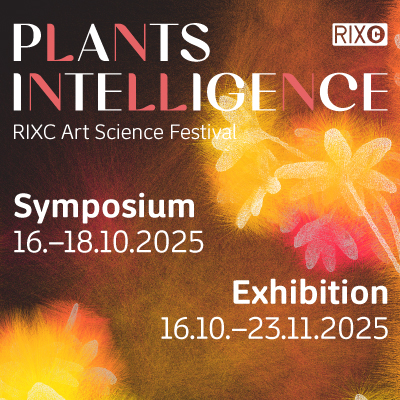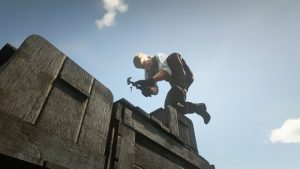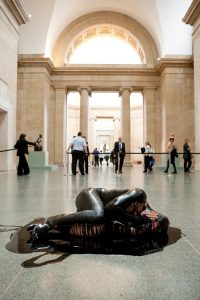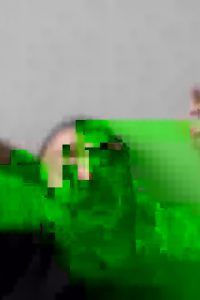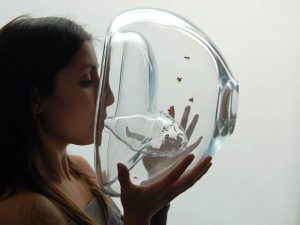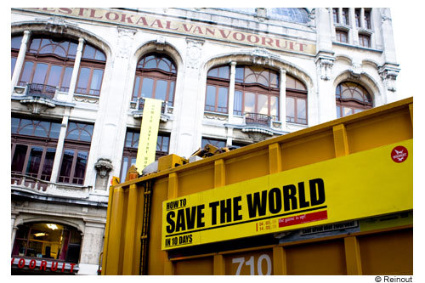 Photo credit Reinout Hiel for Vooruit
Photo credit Reinout Hiel for Vooruit
Setting up an exhibition about today’s ecological and economical crisis is a delicate exercise: it seems that everybody has done one such exhibition before you and invited the same artists as you. This year’s edition of The Game Is Up! , a festival organized by one of my favourite art centers, the Vooruit in Ghent, Belgium, was brazenly titled How To Save the World in 10 Days.
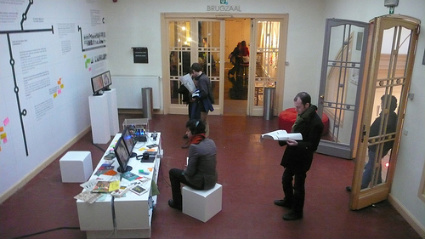
The press material warns you right from the start that the festival is not going to provide fail-proof recipes to get us out of this mess. From small interventions to grand utopian visions, from ecological labs to socio-political dystopias. It’s a given that this festival won’t save the world. But as Marge Simpson once said to her husband Homer : “I do not hate you for failing, I love you for trying.”
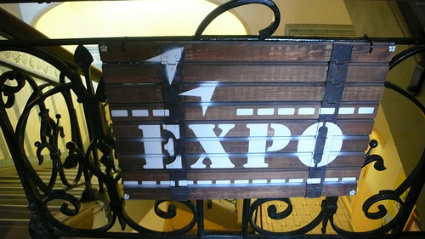
As written above, The Game is Up! chose challenging themes, it set out to embark on much trodden tracks and was conscious of it at every step. Yet, the festival’s clever mix of low tech, no-tech and high-tech installations, performances, graffiti, workshops and debates managed to amaze and inspire me, even if i only managed to spend two hours there to see the exhibition. There was something likely to appeal to anyone: children, the usual art and tech crowd, the crowd that likes art but doesn’t get tech so much, the cynical and the hopeful, passersby who actually never step inside Vooruit, etc. The design of the exhibition was lovely (the fact that Vooruit building is spectacular helps), it was distributed over several floors and featured wooden panels indicating the titles of the works, seats to peruse documentation and watch videos but most of all, there was a fantastic selection of projects:
First there were the cars. A pair of wooden SUVs, the monstrous polluters still popular around Europe, that had crashed into each other right inside the Vooruit cafe. Since 1998 (thus way before ideas of sustainability and recycling became buzz-worthy), Martin Kaltwasser and Folke Köberling have been throwing works made of recycled materials at the face of consumer culture.
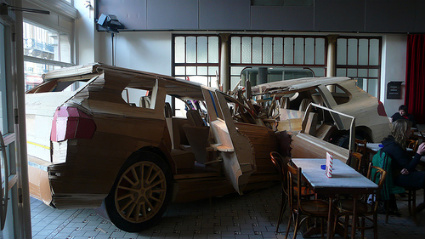
Called Crushed Cayenne, the sculpture mocks the omnipresent car. And so does the other work Kaltwasser & Köberling were showing in the festival exhibition: Autos zu Fahrrädern, two bicycles made out of the material recuperated from one car in one of Graz’ squares. The artists brought the vehicles to Ghent by train and rode around the city with the quirky-looking bikes.
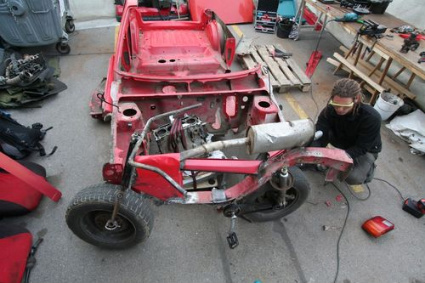 Kaltwasser & Köbberling, Autos zu Fahrrädern
Kaltwasser & Köbberling, Autos zu Fahrrädern
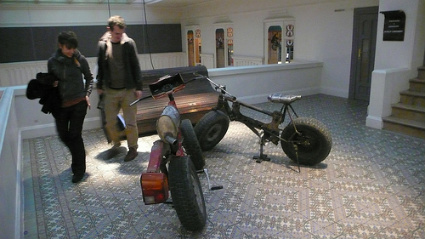
The street performances of the German duo didn’t stop there. They even distributed car condoms in the street. The condom were to be placed on the exhaust pipe of your car to catch exhaust fumes. Video!
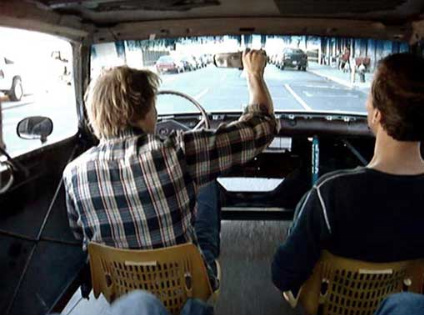 Screenshot from video of Shared Propulsion Car
Screenshot from video of Shared Propulsion Car
There ware more cars and bikes stories in the exhibition rooms upstairs where videos documented several of Michel de Broin’s projects. Shared Propulsion Car is an ’86 Buick Regal stripped of its engine, suspension, transmission and electrical system and outfitted with 4 independent pedal and gear mechanisms for passengers to act as self-propulsion motor. The vehicle retains the illusion of the mass-produced luxury automobile, but is reduced to a shell that now has a top speed of 15km per hour.
The video documents the car in motion, including a surreal encounter with police officers in Toronto
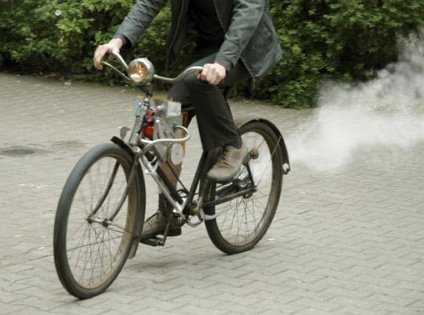 Michel De Broin, Keep On Smoking
Michel De Broin, Keep On Smoking
Another video showed De Broin pedaling around a park in Kreuzberg, Berlin, on a bicycle that transforms kinetic energy produced by the cyclist into smoke. As the artist explained, It’s the reverse of how ecology is used normally, the smoke produced is not polluting. It’s the sign without the effect. Video.
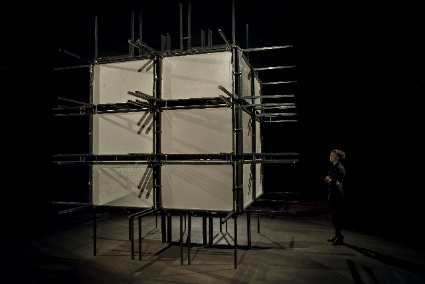 Image Michel De Broin. Courtesy Vooruit
Image Michel De Broin. Courtesy Vooruit
De Broin created a new work for The Game is Up! Shelter is a post-catastrophe shelter crafted with 36 old Vooruit tables. The legs of the tables point outwards to guard the impenetrable interior of the sculpture against the continuous threat of the outside world. Video of the making, plus interview of the artist.
Because saving the world is best done out there in the streets than between the walls of an art center, the festival had also invited Moose to do some “reverse graffiti” on the backside of the Vooruit building (with the help of Mathias Timmermans and Reinout Hiel.) The patterns drawn into the pollution are both incredibly poetical and alarming as they show the extent of the dirtiness of our streets. Video interview of Moose.
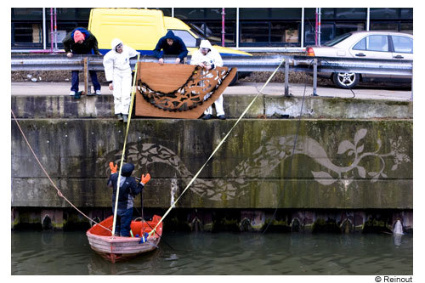 Photo credit Reinout Hiel for Vooruit
Photo credit Reinout Hiel for Vooruit
Perhaps the most meaningful project for me was the hands-on Seedballing workshop that FoAM Brussels & Foamlab Amsterdam had organized for children and families during the festival. Seedballing is a practice that aims to return native and often vanished flora species to cities and suburbia. The most eco-friendly version of seedball, developed by Masanobu Fukuoka, consists in mud-and-clay balls that contain a mixture of organic compost and different seed species meant to complement each other.
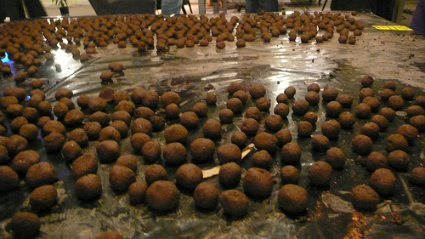
After the workshop, seedballs containing seeds of plants that used to grow around Ghent, but have died out were scattered on appropriate sites during a guerrilla gardening walk. When the rains come, the mud and clay break apart, exposing the seeds to elements that lead to their growth. In each location whichever seeds are best suited thrive in their protected mud starter-home.
The seedballed sites were then mapped and added to google maps of urban edibles.
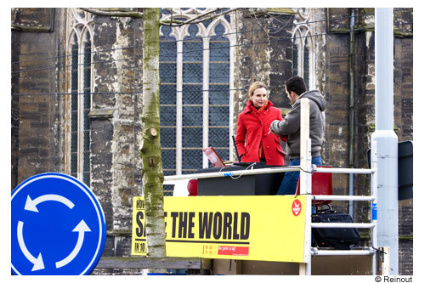 Photo credit Reinout Hiel for Vooruit
Photo credit Reinout Hiel for Vooruit
Natalie Jeremijenko installed her Environmental Health Clinic in the middle of a noisy and very polluted roundabout in Ghent. Anyone could take an appointment and tell her about their environmental anxieties during the consultation. She’d listen and instead of handing out a prescription, she will advise concrete actions to improve the environmental factors in patients’ own neighbourhood. Check out Vooruit’s video:
And if you speak dutch, you might want to watch the video of two patients explaining their environmental concern and the suggestion that Natalie gave them over’ the consultation.
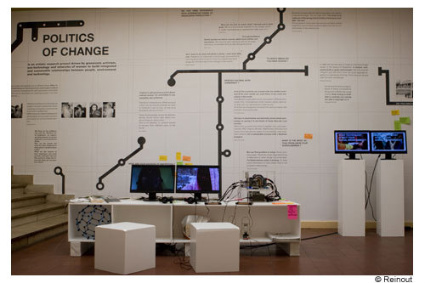 Photo credit Reinout Hiel for Vooruit
Photo credit Reinout Hiel for Vooruit
Annemie Maes, from the So-on collective, covered a wall with pictures, texts, magazines (which you can download as PDF), videos, and interviews that documented her field research at Barefoot College. In this Indian community, illiterate grown-up women are technically trained so they can take their fate in their own hands and provide their village with sustainable energy. The collective believes that their knowledge and experience could inspire the rest of the world to find solutions for climate and environmental issues.
After their visit at Vooruit, members of the public and artists alike could take a taxifiets (taxibike) to be driven home safely.
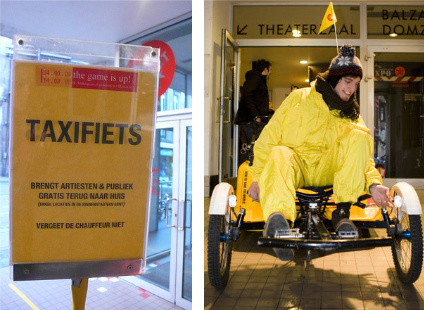 Photo on the right, credit Reinout Hiel for Vooruit
Photo on the right, credit Reinout Hiel for Vooruit
Ah! also worth noting, Antoine Schmitt had installed an LED version of Time Slip in the cafe. The news ticker manipulates incoming news by transferring it to the future. Thus, “A plane crash in Madrid killed 153 people” becomes the even more direful “A plane crash in Madrid will kill 153 people”. Schmitt confronts the viewer with the control – or lack thereof – over his own fate in a universe where time and cause have become unstable concepts.
All my images:
Credit photo on the homepage: Reinout Hiel for Vooruit
Previously at The Game is Up!: Billboard Liberation Front’s talk at Vooruit, Ghent.

